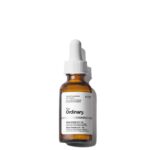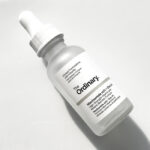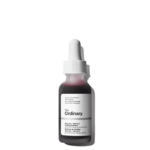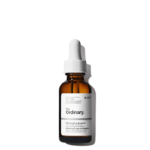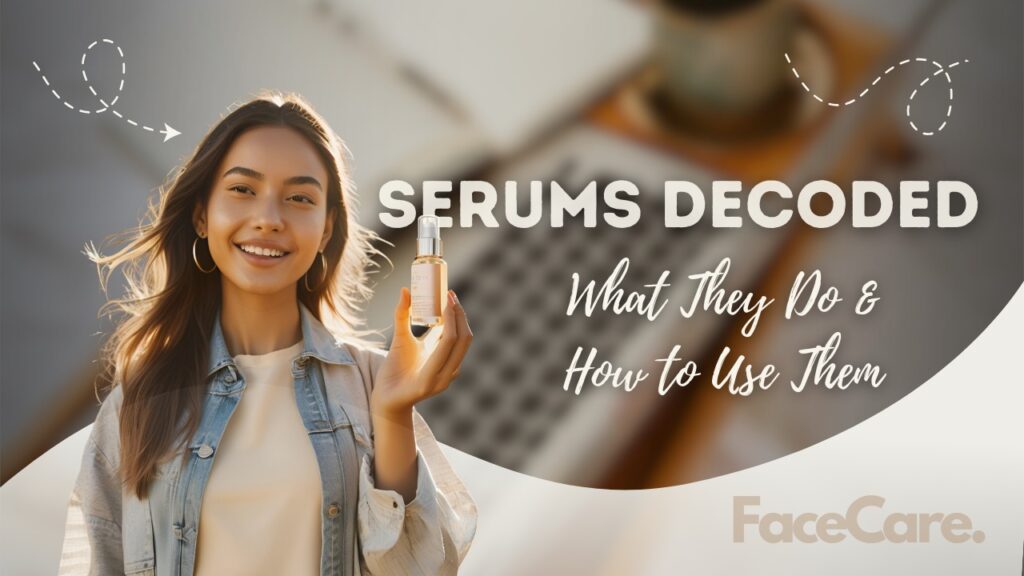
If cleansers are the warm-up and moisturizers are the cool-down, serums are the main event of your skincare routine. 💥 These tiny bottles of magic are packed with powerhouse ingredients designed to target your skin’s deepest needs—fast and effectively.
In this guide, we’re spilling all the serum secrets. Whether you’re dealing with dullness, dryness, acne, or just want that ✨glass skin glow✨—serums are here to help. We’ll break it all down step by step, so you can glow smarter, not harder. 💁♀️💧
📚 Table of Contents
- What Are Serums, Really?
- Why Serums Are the Skincare MVP
- Choosing the Right Serum for Your Skin Type
- How to Layer Serums Like a Pro
- When & How to Apply Serums in Your Routine
- Ingredients to Know: From Niacinamide to Retinol
- Serum Do’s and Don’ts (Read This Before You Start!)
- How to Build a Serum Routine (Without Overdoing It)
- FAQs About Serums
- Final Glow Thoughts
Before we dive into the serum secrets, take a moment to soak this in: you don’t need a 10-step routine to glow—just the right ingredients in the right order. 💫 Whether you’re here to brighten, hydrate, or smooth things out, this guide is your trusty BFF in the skincare aisle. Let’s decode serums together—one glow-boosting step at a time! 💖
1. What Are Serums, Really? 🧴✨
Let’s get one thing straight—serums are not just “extra.” They’re the heart of a powerful skincare routine. Think of them as your skin’s personal trainer: focused, effective, and totally results-driven. 💪
So, what makes them the MVP? 🥇
Serums are lightweight, fast-absorbing liquids packed with a high concentration of active ingredients. Unlike moisturizers that sit on top of your skin, serums dive deep—working at the core to brighten dullness, fade spots, calm redness, smooth fine lines, and give your skin that ✨ lit-from-within glow.
Whether you’re a newbie or a skincare junkie, adding the right serum can completely level up your glow game. And the best part? There’s one for every skin goal out there. Let’s find yours. 💕
2. Why Serums Are the Skincare MVP 🏆
Let’s get one thing straight—serums are not just “extra.” They’re the heart of a powerful skincare routine. Think of them as your skin’s personal trainer: focused, effective, and totally results-driven. 💪
So, what makes them the MVP? 🥇
Serums are lightweight, fast-absorbing liquids packed with a high concentration of active ingredients. Unlike moisturizers that sit on top of your skin, serums dive deep—working at the core to brighten dullness, fade spots, calm redness, smooth fine lines, and give your skin that ✨ lit-from-within glow.
Whether you’re a newbie or a skincare junkie, adding the right serum can completely level up your glow game. And the best part? There’s one for every skin goal out there. Let’s find yours. 💕
3. Choosing the Right Serum for Your Skin Type 🧴✨
Serums are powerful—but to really work their magic, you’ve gotta find the one that vibes with your skin. Each skin type has its own needs, and picking the right serum is like finding your skincare soulmate. 💘 Here’s how to match your skin to its perfect serum partner.
🛢️ Oily or Acne-Prone Skin
Say hello to niacinamide and salicylic acid! These ingredients help balance oil, clear pores, and reduce those unwanted breakouts.
- Look for: lightweight, water-based serums
- Avoid: heavy oils or pore-clogging ingredients
💡 Pro Tip: Niacinamide is a superstar—regulates oil and calms the skin!
🌵 Dry or Dehydrated Skin
Your skin is thirsty, and hyaluronic acid is here to quench it! This moisture magnet pulls water into the skin for that plump, dewy glow.
- Look for: hydrating serums with glycerin, HA, or panthenol
- Avoid: high percentages of alcohol or harsh exfoliants
💡 Hydration Hack: Layer HA on damp skin and seal it with moisturizer!
😳 Sensitive Skin
Gentle vibes only! Sensitive skin needs calm and care—think centella asiatica, aloe vera, or ceramides.
- Look for: fragrance-free, minimal ingredient lists
- Avoid: high-strength acids or strong retinoids (at least at first)
💡 Soothing Sidekick: Centella (also known as Cica) is like a hug for your face. 🫶
😶🌫️ Combination Skin
Your T-zone’s oily, but your cheeks are dry? Time to balance both worlds! Try serums that multitask—niacinamide + hyaluronic acid is a winning combo.
- Look for: balancing or dual-action formulas
- Avoid: using only mattifying serums (they can dry out your drier areas)
💡 Combo Fix: Layer lightweight hydration under oil-control actives for harmony.
😊 Normal Skin
Blessed with chill skin? You’ve got options! Look for serums with vitamin C, peptides, or antioxidants to maintain your natural glow and protect from environmental damage.
- Look for: brightening and preventative formulas
- Avoid: nothing extreme—gentle and consistent wins
💡 Glowy Bonus: A little vitamin C in the morning = radiant skin all day! 🍊
4. How to Layer Serums Like a Pro 💧
Layering serums might sound tricky, but once you get the hang of it, it’s like putting together the perfect skincare smoothie. 🍹 The secret? Apply the thinnest, most lightweight serums first, then work your way up to the thicker, richer ones. Here’s how to do it like a skincare expert:
Step 1: Cleanse & Tone First!
Before you even think about serums, your skin needs to be clean and prepped. Always start with a gentle cleanser to remove dirt, oil, and makeup. Follow with a toner if you like, to balance the skin’s pH and hydrate.
Step 2: Start with Light, Water-Based Serums
Always start with the lightest serum—think hydrating ones like hyaluronic acid or soothing serums with niacinamide. These will be absorbed quickly, giving your skin the hydration it needs without overwhelming it.
💡 Pro Tip: Wait a minute or two after applying each serum to let it sink in before moving on.
Step 3: Move on to Treatments & Actives
Now that your skin is prepped and hydrated, you can move on to treatment serums. These include products designed for specific concerns—like retinol, vitamin C, or acids like salicylic acid or lactic acid. These are more concentrated and should be used sparingly to target specific areas.
💡 Pro Tip: If you’re using a retinol serum, start slow! Apply it a couple of times a week and gradually build up.
Step 4: Seal it with a Moisturizer
The final step in your serum layering process? Seal in all that goodness with a moisturizer! This locks in all the active ingredients and prevents your skin from losing moisture. Choose a moisturizer that suits your skin type—whether it’s lightweight for oily skin or rich for dry skin.
💡 Pro Tip: If your skin feels a little tight after applying serums, that’s when your moisturizer really comes in to give that extra dose of hydration and softness.
Bonus Tip: Less is More
While serums are magical, you don’t need a hundred in your routine. Stick to 2-3 serums that target your main skin concerns. Too many serums might overload your skin, leading to irritation.
4. When & How to Apply Serums in Your Routine ⏰✨
Now that we’ve covered layering, let’s talk about when to apply your serums during your skincare routine—and how to get the best results. After all, timing is everything when it comes to skincare. 😉
Step 1: Cleanse First
Before you even think about serums, your skin needs to be cleansed. Use a gentle cleanser to remove any dirt, oil, or makeup, and get your skin prepped for all the skincare goodness that’s about to follow.
💡 Pro Tip: If you’re using a toner, apply it after cleansing to help your skin better absorb your serums.
Step 2: Apply Serums on Damp Skin
For optimal absorption, apply your serums while your skin is still slightly damp. This helps lock in hydration and makes it easier for the active ingredients in your serum to penetrate deeper into your skin.
💡 Pro Tip: If you’re using a hydrating serum (like hyaluronic acid), damp skin will help it attract moisture even more effectively.
Step 3: Start with the Thinnest Serum
We’ve already talked about layering serums, but now it’s time to focus on when to apply each type. Start with the thinnest, most lightweight serum first. Think of hydration serums or soothing serums like niacinamide. These will absorb quickly, prepping your skin for the next layers.
Step 4: Apply Active Ingredients
Next, if you’re using treatment serums like retinol or vitamin C, apply them after the hydrating or soothing serums. These are the heavy hitters that target specific skin concerns (like fine lines, pigmentation, or acne), so they need to be applied once your skin is already prepped.
💡 Pro Tip: If you’re using retinol, apply it in the evening, as it can increase sun sensitivity. Start with a small amount, a few times a week, and gradually increase usage.
Step 5: Seal Everything with Moisturizer
Once your serums have been applied, make sure to lock everything in with a moisturizer. This step is crucial for keeping all that good stuff in and preventing moisture loss.
💡 Pro Tip: Don’t skip moisturizer, even if you have oily skin—hydration is key to keeping your skin balanced!
When to Apply Serums: Morning vs. Night
Some serums work best in the morning, and others are ideal for night use. Here’s a quick breakdown:
- Morning: Vitamin C, hydrating serums, and antioxidant-rich serums. These will help protect your skin throughout the day.
- Night: Retinol, AHAs, and BHAs. These work best when your skin is in repair mode while you sleep.
6. Ingredients to Know: From Niacinamide to Retinol 🔬🌟
Serums are packed with skin-loving ingredients, but knowing which ones to look for—and what they do for your skin—can take your routine to the next level. Let’s break down the most popular and effective ingredients in serums, so you know exactly what’s going on with your skin.
1. Niacinamide (Vitamin B3) – The Balancer 🧴
Niacinamide is a superstar when it comes to controlling oil production, minimizing pores, and reducing redness. It’s also great for sensitive skin because it’s soothing and gentle.
💡 Why You Need It: If you’re dealing with breakouts, redness, or uneven skin tone, niacinamide is your new BFF. It helps balance your skin’s natural oils and boosts hydration.
💫 Best For: Oily, acne-prone, or sensitive skin.
2. Hyaluronic Acid – The Hydrator 💧
Hyaluronic acid is like a moisture magnet. It draws moisture into the skin, keeping it plump, dewy, and hydrated. It’s lightweight and perfect for layering with other products.
💡 Why You Need It: If you want to keep your skin hydrated without the heaviness of oils or creams, hyaluronic acid is a must. It helps your skin retain moisture, making it look fresh and bouncy.
💫 Best For: Dry, dull, or dehydrated skin.
3. Vitamin C – The Brightener ✨
Vitamin C is a potent antioxidant that helps brighten your complexion and fade dark spots. It’s like a little sunshine in a bottle that helps protect your skin from environmental damage while promoting collagen production.
💡 Why You Need It: If you’re looking to tackle pigmentation, fine lines, or just give your skin a glow boost, vitamin C is a game-changer.
💫 Best For: Dull, uneven, or pigmentation-prone skin.
4. Retinol (Vitamin A) – The Anti-Ager ⏳
Retinol is a form of vitamin A and is one of the most effective ingredients for fighting wrinkles, improving skin texture, and speeding up cell turnover. It helps fade acne scars and reduces the appearance of fine lines and wrinkles.
💡 Why You Need It: If you’re looking for anti-aging benefits or need help with acne scars and skin texture, retinol is your secret weapon. But be cautious—it can cause irritation if you’re new to it, so start slow.
💫 Best For: Mature skin, acne-prone skin, or textured skin.
5. Salicylic Acid – The Pore Cleaner 🧼
Salicylic acid is a beta-hydroxy acid (BHA) that penetrates deep into your pores to clear out blockages. It’s great for acne-prone skin because it helps prevent and treat breakouts.
💡 Why You Need It: If you have clogged pores, blackheads, or acne, salicylic acid works wonders by exfoliating the inside of your pores and clearing them out.
💫 Best For: Oily, acne-prone, or combination skin.
6. Peptides – The Skin Repairers 🛠️
Peptides are chains of amino acids that help build proteins in your skin, such as collagen and elastin. They help with skin repair, firmness, and elasticity.
💡 Why You Need It: If you’re looking to firm and tighten your skin, peptides are a must. They promote skin regeneration and improve texture.
💫 Best For: Aging skin or anyone looking to boost skin elasticity.
7. Centella Asiatica – The Calmer 🌱
Centella Asiatica, or “Cica,” is a soothing plant extract known for its healing properties. It helps calm irritated skin and promotes skin barrier repair.
💡 Why You Need It: If you have sensitive skin or are dealing with redness and irritation, centella will help soothe and calm your skin.
💫 Best For: Sensitive, irritated, or inflamed skin.
Now that you know what’s in your serums and what each ingredient does, you’re one step closer to achieving that glowing, healthy skin. ✨
7. Serum Do’s and Don’ts (Read This Before You Start!) 🚦💡
Okay homie, you’ve picked your serum, read the ingredients, and you’re hyped to get glowing. But wait! Before you slather it on, here are some essential do’s and don’ts to make sure your serum actually works for you (and not against you).
✅ Do: Apply Serums to Clean, Damp Skin
Serums absorb best on clean, slightly damp skin—like a sponge soaking up water. This boosts the effectiveness of hydrating ingredients (like hyaluronic acid) and helps your skin drink it all in.
💧 Glow Tip: After cleansing, lightly pat your face with a towel but leave it a little dewy. Then apply your serum.
✅ Do: Follow Up with Moisturizer
Lock it in! Serums are potent, but they need a moisturizer to seal the deal and protect your skin barrier. Think of moisturizer as the cozy blanket that keeps your serum snug and working overnight (or all day long!).
✅ Do: Start Slow with Potent Actives
If you’re trying retinol or exfoliating acids for the first time, go slow. Use them 1-2 times a week to start, and always patch test.
⏳ Your skin will thank you later.
✅ Do: Patch Test New Serums
Always! Especially with serums that contain retinol, acids, or essential oils. Even gentle ingredients can surprise you, so better safe than sorry.
👉 Apply a small amount on your jawline or behind your ear for 24 hours before using all over.
🚫 Don’t: Mix Active Ingredients Without Knowing What You’re Doing
Combining strong actives (like vitamin C, retinol, and exfoliating acids) can irritate your skin or cancel each other out. Unless you’re a skincare pro, keep it simple and avoid layering multiple potent serums at once.
⚡ Avoid combo overload: For example, don’t mix vitamin C + AHA/BHA + retinol in one routine.
🚫 Don’t: Overdo It
With serums, more is not better. Stick to 2–3 drops—serums are highly concentrated and a little goes a long way.
🙅♀️ Too much = waste + potential irritation.
🚫 Don’t: Skip Sunscreen
Many active serums (like vitamin C, AHAs, and retinol) make your skin more sensitive to the sun. So if you’re using them in the AM or PM—never ever skip sunscreen the next day.
🌞 No serum routine is complete without daily SPF.
Using serums the right way makes all the difference between “meh” results and that “OMG you’re glowing” moment. Keep these tips close, and your skin will thrive. 💖
9.How to Build a Serum Routine (Without Overdoing It) 🧪🧴
10. FAQs About Serums 🙋♀️✨
Q: Can I use more than one serum at a time?
A: You totally can—but keep it chill. Start with one, and once your skin is comfy, you can layer another. Just make sure the ingredients play nice (for example, avoid mixing vitamin C with niacinamide or retinol until you’re more advanced).
Q: When should I apply serum in my routine?
A: Right after cleansing and before moisturizing. Think of it as the heart of your routine—clean skin, then serum, then seal it in with your moisturizer.
Q: How long does it take to see results?
A: Patience, glowing one! 🌱 Some serums give you a quick glow, but deeper changes (like fading spots or smoothing fine lines) take 4–8 weeks of consistent use. Stay loyal!
Q: Do I need to use a serum both morning and night?
A: Not always. Some serums (like vitamin C) shine in the morning, while others (like retinol) are best at night. Check the label—or check in with us! 💌
Q: Can I skip moisturizer if I use a hydrating serum?
A: Nope! A serum hydrates within your skin, but a moisturizer seals it all in. Without that seal, the hydration can literally evaporate. Moisturizer = non-negotiable.
Q: Is tingling normal?
A: Mild tingling from active ingredients like vitamin C or exfoliating acids can be normal at first. But if you feel burning, stinging, or see redness, rinse off and maybe skip that product. Your skin’s comfort matters most. 💖
Q: Do serums expire faster than creams?
A: Yes! Especially vitamin C and retinol serums. Store them in a cool, dark place, and pay attention to that PAO (Period After Opening) symbol on the bottle.
✨ Still got questions? DM us anytime or drop a comment—we’re here to glow together.
10. Final Glow Thoughts 💭💖
Serums might seem like the skincare world’s fancy little extras, but once you understand how they work, you’ll realize they’re actually powerful essentials in your glow game. Whether you’re battling breakouts, chasing hydration, or just trying to level up your routine—serums meet your skin where it’s at and give it that extra love it deserves.
Here’s what we want you to remember:
- You don’t need 10 serums—start with one that targets your biggest concern.
- Consistency > Perfection. Don’t stress about missing a day—just keep going.
- Listen to your skin. If something doesn’t feel right, it’s okay to pause and reassess.
- And always, always finish with sunscreen. ☀️
Glow isn’t just about skin—it’s about how you feel in your skin. So celebrate every little win, every glow-up moment, and every time you choose to care for yourself. 💫
Stay tuned, because we’ve got more skincare love coming your way!

